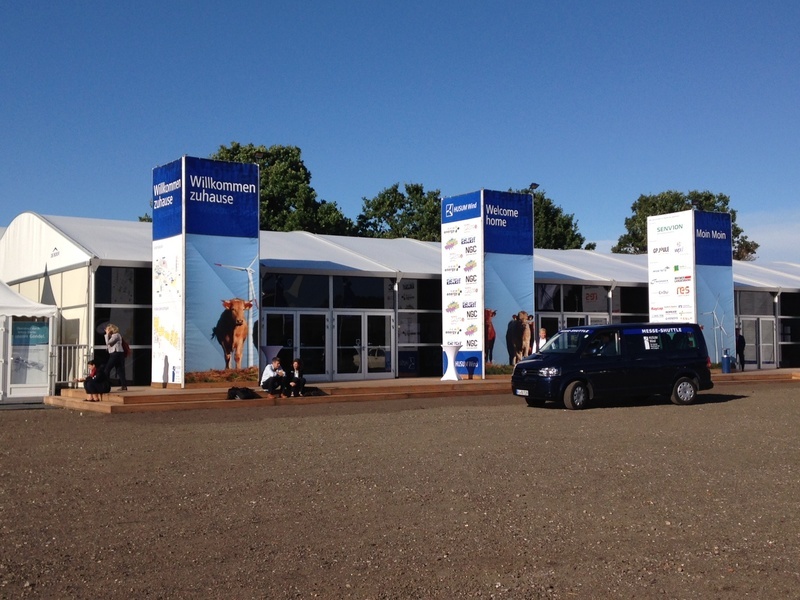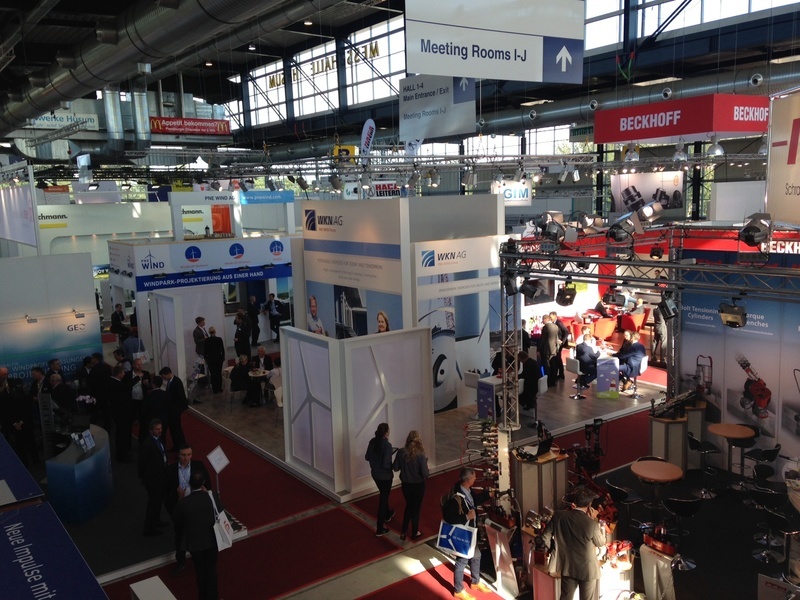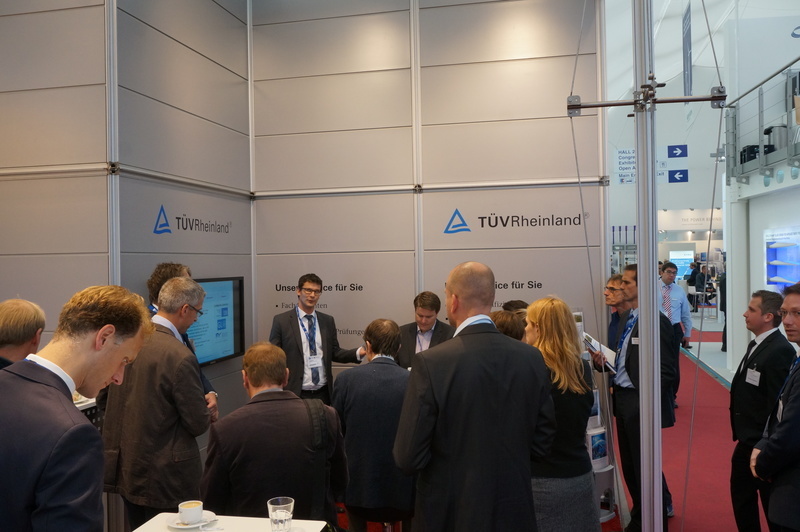News Release from windfair.net
Wind Industry Profile of
Germany: From Tradition to Innovation - HUSUM Wind 2015
The Exhibition
The German wind industry celebrates the return to a place that is like no other for the pioneering spirit and innovative growth of the industry: After several years of break and a public clash with Hamburg HUSUM Wind is back.
From Tuesday to Friday this week more than 650 exhibitors from all parts of the wind industry show off their products and services. After the agreement with Hamburg to take over hosting the international wind fair WindEnergy, Husum took over the part of the exhibition for the German wind market. The fair is significantly smaller than in recent years, however, the familiar atmosphere under the slogan "Welcome home" contributes to the flair of the location. Although the fair, accompanying the market for more than 25 years, has been modernized, it still looks like a provisional arrangement: Aisles in the tents are still narrow and crowded, the floor vibrates when you walk on it, and the press center looks like a broom closet. Nevertheless, the fair is well attended, the atmosphere is great and 20,000 visitors are expected to attend until Friday.
'Welcome home 'is the motto of the exhibition (Photo: kr)
The importance of the fair for Schleswig-Holstein showed on Tuesday when Prime Minister Torsten Albig brought his entire cabinet for the opening ceremony. In his speech he stressed the importance of the wind energy industry for the federal state, from where the energy transition is to be taken forward – and not just to the rest of Germany, but to the whole of Europe: “This year the wind industry is once again coming together where wind energy has a long tradition, and is home to specialist knowledge and experience. This branch of industry is an important cornerstone in the success of the transition to renewable energy usage and a stable mainstay for partners in industry.”
Economy and Energy Minister Sigmar Gabriel couldn't attend the event in person due to the current refugee crisis, but he sent his Parliamentary Secretary Uwe Beckmeyer who stated that Husum is a “hotspot of the energy transition in Germany”.
Significantly less euphoric was the President of the German Wind Energy Association (BWE) Hermann Albers, who warned in view of the upcoming international climate summit in Paris of a miss of the two-degree target and pointed out that Husum and Hamburg are under threat due to their location when rising sea levels occur. He also appealed to the conscience of the wind industry to position itself clearly in the debate about the refugee crisis and to reach out to the arriving people and bring them in wage and labor. The wind industry is still a growing industry with social responsibility which must now be shown: "Wind energy is peace policy, fossil energy is war policy," he pointed out.
A look at the only exhibition hall, the remaining exhibitors are housed in tents (Photo: kr)
Tenders
Still a great topic at the exhibition is the upcoming introduction of the tender system in Germany next year. Currently there are ongoing negotiations happening about how exactly the conditions are designed to look and whether there will be exceptions. A widespread fear of many project planners is that community wind projects will have no chance of success under the new system. However, Beckmeyer stressed that the “diversity of actors is a matter of the heart for the German government” and called on all parties to participate actively in the process of designing the tender system.
Technology
In addition, major innovations are not in center of the exhibition, but rather minor tweaks of existing products. How can you get even a few percent more out of the wind turbine and enhance their performance and efficiency? The service provider seebaWIND GmbH presents various products in the field of retrofits, including a self-developed SDL retrofit system for the MD series, optimized rotor blades and a new Mita control. Up to 5 percent more efficiency should be possible – and that alone by optimizing a few settings. "We can deliver any spare parts including large components at short notice for replacement" emphasizes seebaWIND manager Holger Hämel in addition.
Another area that is becoming increasingly important for the industry is the question of what will happen to older turbines which have reached their running term of 20 years. "The boom in installations of the early 90s means that more and more systems are in a critical age now," says Torsten Bednarz, Departmental Head at TÜV Rheinland. "The assessment of whether and under what conditions a further operation makes economic sense, provides trouble for many operators," continues Bednarz. The procedure for a lifetime extension is complex: In order to obtain the individual detection, the use of reserves of the wind turbine have to bee determined and documented by an surveyor. Here, a practical proof is required which is provided by an on-site inspection, similar to a periodic inspection. The state of stability of the relevant main components is particularly tested for fatigue. For example, rotor blades, engine carriers or the hub. With an additional analytical part of the detection method, various data such as the history file and the SCADA data are evaluated. A comparison is made of actual values against design values of the plant. Operating hours, operating mode, load level, wind speeds, turbulence intensity and data logs are surveyed. Depending on the situation, full computational models and simulations have to be performed. The greater the amount of existing data, the easier the evaluation becomes.
TÜV Rheinland is one of the exhibitors at the HUSUM Wind. (Photo: TÜV Rheinland)
The aspect of collecting and evaluating data under the headline 'Industry 4.0' is becoming increasingly important for the wind industry. To make the work of the service engineer on-site easier, SSB wind systems has introduced the first App for electrical pitch systems. Until now, the service technicians had to connect a laptop to the pitch system to read data, but now the app allows a wireless connection via smartphone or a tablet. "Similar to some ideas of Industry 4.0 it is designed to facilitate the work for service engineers in the rotor blade hub and at the same time increase workplace safety, as the app eliminates tripping hazards such as cables," says Helmut Reinke, Sales and Marketing Director of SSB Wind Systems. Simplification and networking are the key words. It is also taken care of security issues: The connection to the app can only be provided locally via a dongle, so it's not possible to stand beneath the turbine and manipulate the system from down there.
Until Friday, Husum Wind will inform visitors about innovations. Next year, Hamburg WindEnergy will take place from 27-30th September, 2016.
- Author:
- Katrin Radtke
- Email:
- kr@windmesse.de




